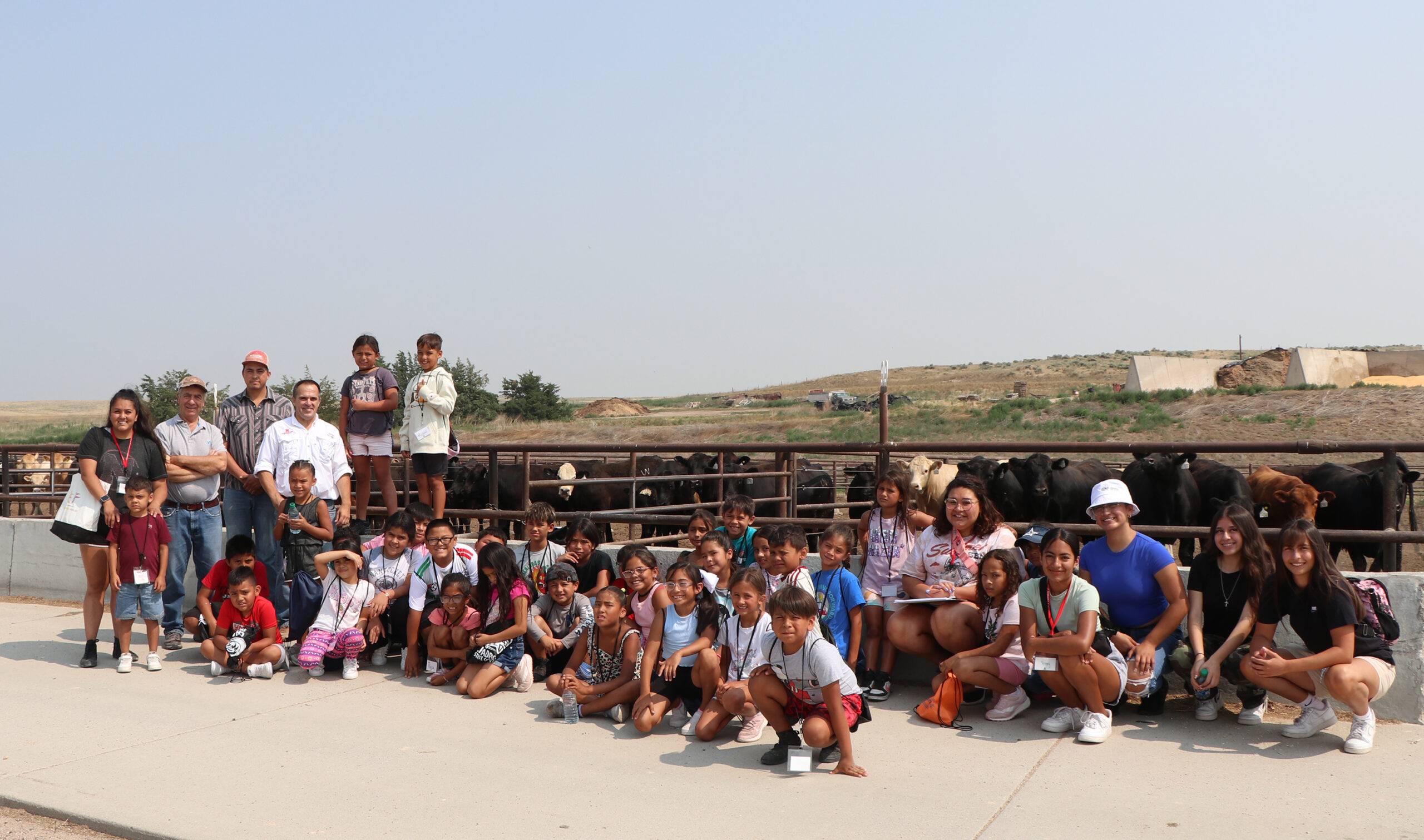![]()

By Chabella Guzman, PREEC communications
A metal fence separated a few boys from a bunch of cattle as they looked at each other. Nodding their heads, the boys agreed it would be nice to take one of the cattle back home with them. The boys were part of the Summer Youth Empowerment Camp, which brought more than 30 children to visit the UNL Panhandle Feedlot and the UNL Panhandle Research Extension and Education Center in Scottsbluff on July 24.
The campers began their visit to PREEC at the feedlot, where they learned about the cattle, what they ate, and how Pablo Loza, Nebraska Extension feedlot management and nutrition specialist, and his crew cared for them. “We learned the function of someone who works in a feedlot or a scientist who works with a feedlot. Some of the kids had never seen cattle in person, so that was a different experience,” said Maricia Marquez, Empowering Families program director.
After visiting the cattle and having lunch at the Center, the students rotated through five different educational stations. They learned about dry edible beans, the various kinds grown in the Panhandle, and sampled brownies made from beans. There was a soil station where they learned about the importance of healthy soils. The campers learned about how technology was improving agriculture and about birds in Nebraska.
Empowering Families hosted the summer camp, which served students in second to sixth grade. “The camp is about three weeks long and is open to anyone,” Marquez said. “Our home base is the Guadalupe Center, and our activities focus on STEMS: science, technology, engineering, and math.”
In the mornings at the camp, Marquez and her team would break the students up into small groups to do science experiments or an art project. In the afternoon, they would take the children to different historical sites. “Our intent with the camp is to do outreach to low-income families, but also families that have an immigrant background. So some of our youth are Spanish-speaking only. This is a way to keep them engaged and help them learn English.”
Studies have shown that low-income students’ educational attainment falls over the summer if they are not involved in educational activities. “So by doing this in a fun and friendly environment, our goal is to help them maintain their academic engagement throughout the summer,” Marquez said. “It’s also easier transitioning back (to school) in the fall.”
“So that’s our goal, learning and having fun while doing it. Then also, to just integrate folks into Western Nebraska’s heritage. That’s why we went to Chimney Rock, the (Scotts Bluff National) Monument, and have been teaching the students about the history here. We have a lot of history and geological sites that a lot of people take for granted,” Marquez said.
